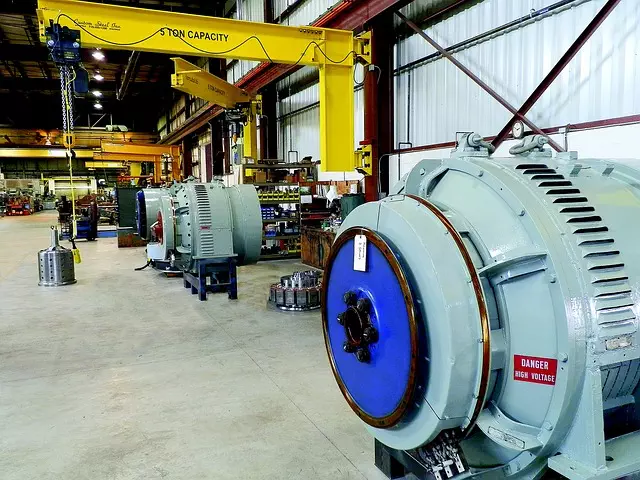Soil erosion, driven by factors like water flow and vegetation cover, poses significant risks to infrastructure, with Foundation Repair Specialists addressing resulting structural damage and instability. Traditionally relying on chemical stabilizers and mechanical reinforcement, the industry is shifting towards eco-friendly practices. Foundation Repair Specialists now employ natural binders, bio-based solutions, and innovative technologies for soil stabilization, minimizing environmental impact while ensuring long-term land stability. Green methods like bio-remedial agents and biological solutions enhance soil health, appeal to environmentally conscious consumers, and contribute to disaster preparedness. Advanced polymers and geosynthetics offer further sustainable options, with successful case studies showcasing the effectiveness of green soil solutions. By promoting robust tree growth and native vegetation, specialists can provide cost-effective, long-term stabilization, aligned with growing community support for ecological preservation in foundation repair.
In today’s world, sustainable soil stabilization is crucial for mitigating erosion’s impact on structures, especially those relying on Foundation Repair Specialists. This article explores comprehensive solutions, from traditional techniques to innovative technologies, focusing on natural, organic, and biological methods. We delve into successful case studies, cost-effective strategies, and the essential role of professionals in promoting green soil practices, all while emphasizing community and regulatory support for sustainable soil management.
Understanding Soil Erosion and Its Impact on Structures

Soil erosion is a natural process, but it can have significant impacts on structures and infrastructure when it occurs at accelerated rates. Erosion weakens the soil, leading to instability and potentially causing damage to buildings, roads, and other fixed objects. Foundation repair specialists often deal with the consequences of severe erosion, which can result in structural failures and costly repairs.
Understanding the causes and effects of soil erosion is essential for implementing effective stabilization methods. Factors like water flow, vegetation cover, and soil composition play a crucial role in erosion control. By identifying vulnerable areas and adopting sustainable practices, Foundation Repair Specialists can help mitigate erosion’s detrimental effects, ensuring the longevity and stability of built environments.
Traditional Soil Stabilization Techniques: An Overview

Traditional soil stabilization techniques have long been relied upon by foundation repair specialists to address issues related to unstable or erodable soils. These methods are crucial in ensuring structural integrity and longevity of buildings, particularly in regions prone to shifting ground conditions. Common approaches include the use of chemical stabilizers, such as cement or lime, which improve soil strength and reduce water permeability. Another widely employed technique is mechanical stabilization, involving the introduction of reinforcement bars or grids to enhance soil bearing capacity and prevent settlement.
These traditional methods have been refined over decades, offering effective solutions for various soil types. However, with growing environmental awareness, there’s a growing emphasis on eco-friendly alternatives that minimize ecological disruption. This shift has led to the exploration of sustainable stabilization practices, including the use of natural binders like bio-polymers and organic materials, as well as innovative technologies that promote soil regeneration and improved water retention.
The Role of Foundation Repair Specialists in Sustainable Practices

Foundation Repair Specialists play a pivotal role in promoting sustainable soil stabilization methods, offering expertise that bridges traditional construction and eco-friendly practices. They contribute to long-term environmental health by implementing techniques that not only fix structural issues but also enhance soil integrity and resilience. These specialists are well-versed in using environmentally friendly materials and methods, such as bio-based solutions and advanced drainage systems, to mitigate erosion and improve land stability without causing additional ecological harm.
By integrating sustainable practices into their work, Foundation Repair Specialists help reduce the carbon footprint of construction projects. They also play a key role in disaster preparedness and resilience, as stable soils are crucial for preventing landslides and other geo-technical hazards. Furthermore, they collaborate with architects, engineers, and urban planners to incorporate green infrastructure into building designs, fostering more sustainable and resilient communities.
Natural and Organic Methods for Soil Reinforcement

Soil stabilization is a key aspect of sustainable land management, and natural, organic methods offer an eco-friendly alternative to traditional reinforcement techniques. Foundation repair specialists often recommend these approaches for reinforcing soil without resorting to chemical or synthetic solutions. One effective method involves the use of bio-remedial agents such as microbes and plants that enhance soil structure and stability naturally. For instance, certain plants have deep root systems that can penetrate compacted soils, improving drainage and reducing erosion.
Additionally, organic materials like compost, straw bales, and wood chips can be incorporated into the soil to increase its capacity to hold water and nutrients, thereby strengthening it. These methods not only promote soil health but also contribute to a more sustainable environment by minimizing the need for intensive mechanical or chemical interventions, which can have adverse effects on ecosystems and groundwater quality.
Biological Solutions: Microorganisms and Their Benefits

Biological solutions, leveraging the power of microorganisms, offer a promising and eco-friendly approach to soil stabilization. These tiny organisms play a crucial role in enhancing soil structure and stability, making them valuable tools for foundation repair specialists. Through their natural processes, they improve soil compaction, increase water retention, and facilitate nutrient cycling, all of which contribute to healthier and more robust soils.
The benefits extend beyond immediate soil improvement; beneficial microorganisms also promote the growth of plants and vegetation, further stabilizing the soil long-term. This organic method not only reduces the environmental impact but also provides a sustainable solution for various soil-related issues, appealing to those seeking environmentally conscious foundation repair alternatives.
Innovative Technologies in Soil Stabilization

Soil stabilization has seen a surge in innovative technologies, transforming the way foundation repair specialists approach challenging terrain and structures. Modern methods go beyond traditional techniques, offering eco-friendly solutions for diverse soil issues. One notable advancement is the use of advanced polymers, which can be injected into unstable soils to strengthen them. These polymers expand when activated, improving soil compaction and providing long-lasting stability, making them a preferred choice among foundation repair professionals.
Additionally, geosynthetics, such as geogrids and geotextiles, have gained popularity for their versatility in soil stabilization. These synthetic materials are designed to enhance soil capacity, prevent erosion, and provide additional structural support. Foundation repair specialists can employ these technologies to stabilize slopes, prevent settlement, and even create new landforms, ensuring the integrity of structures built on challenging soils.
Case Studies: Successful Implementation of Green Soil Solutions

In recent years, the successful implementation of green soil solutions has emerged as a powerful approach to sustainable soil stabilization. These innovative methods have been adopted by foundation repair specialists worldwide, leading to remarkable results in various case studies. For instance, urban areas grappling with sinking land due to excessive water extraction have witnessed significant improvements through eco-friendly soil reinforcement techniques. By integrating natural materials and advanced engineering principles, these solutions not only stabilize the soil but also promote environmental sustainability.
One notable case involves a historic city where ancient buildings were at risk of structural damage due to unstable soil conditions. Foundation repair experts there utilized bio-based soil amendments and geotextile membranes to enhance soil strength and resilience. The result was a restored urban landscape, with buildings securely anchored in place. This successful implementation highlights the potential of green soil solutions to merge ecological preservation with effective foundation repair, setting a precedent for future developments in both sectors.
Cost-Effective Strategies for Long-Term Stability

When it comes to sustainable soil stabilization, cost-effective strategies can provide long-term solutions without breaking the bank. Foundation repair specialists often recommend deep root systems for trees as a natural and eco-friendly method. By encouraging robust tree growth near structures, these roots act as an organic stabilizing force, holding the soil in place and preventing erosion. This approach not only reduces the need for expensive traditional stabilization techniques but also promotes a healthier environment by fostering urban greening.
Additionally, using native vegetation is another cost-saving and sustainable practice. Native plants are adapted to local conditions, making them more resilient and less reliant on external resources. They require minimal maintenance and can create a diverse, robust ecosystem that stabilizes soils naturally. This method is particularly effective in retaining soil during heavy rains, reducing the risk of foundation damage caused by water erosion—a common concern for Foundation Repair Specialists.
Community and Regulatory Support for Sustainable Soil Management

Community and regulatory support play a pivotal role in promoting sustainable soil management practices, especially for areas prone to foundation issues. Many regions are now recognizing the long-term benefits of proactive soil stabilization methods, which can mitigate the need for costly and environmentally disruptive traditional foundation repair solutions offered by specialists. This shift is driven by both public awareness and stricter building codes that mandate sustainable approaches to soil stabilization.
Local governments and community organizations are encouraging the adoption of eco-friendly techniques by providing resources, grants, and educational programs. These initiatives aim to empower homeowners and builders to make informed decisions, ensuring that soil stabilization is integrated into construction projects from the outset. By fostering collaboration between residents, experts, and regulatory bodies, these efforts contribute to a more sustainable future, where communities take collective responsibility for their environmental impact, potentially reducing the need for intensive foundation repair services.
